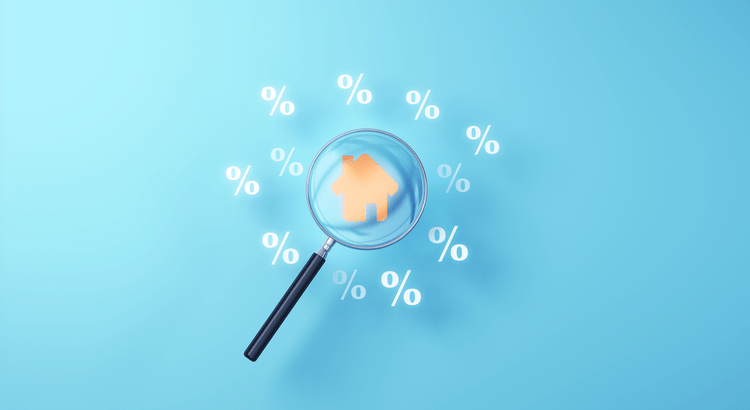What’s Behind the Wild Ride of Mortgage Rates? Understanding the Key Factors Driving Volatility
by Conor J. Green

If you’ve been keeping a close eye on mortgage rates lately, you’ve probably felt like you’re riding a roller coaster. One day they’re on the rise, and the next, they take a slight dip. If you’re wondering what’s behind all this volatility, you’re not alone. The reality is, mortgage rates don’t move in a vacuum—there are several factors at play that cause these shifts, some of which are easier to predict than others.
In this article, we’ll break down the major drivers behind the current fluctuations in mortgage rates and what you can expect moving forward. Understanding the forces behind these changes will help you make smarter decisions when it comes to your mortgage and home-buying plans.
The Political Landscape: How Elections Shape Mortgage Rates
It might surprise you to learn that the political environment plays a significant role in mortgage rate fluctuations. Election seasons, in particular, bring a certain level of uncertainty to the markets. Whether the outcome is a presidential race or local elections, the financial markets are paying attention to how these political changes might impact economic policies. And this uncertainty can directly affect mortgage rates.
The National Association of Home Builders (NAHB) notes that the rise in mortgage rates over the past few weeks has been largely driven by concerns surrounding the presidential election. Even after the election is over, uncertainties around the winner’s policies—particularly on topics like budget deficits—can continue to push rates higher. When markets are unsure about what’s to come, investors often turn to safer assets like bonds, which can indirectly influence mortgage rates.
Additionally, political events beyond the election, like international tensions, supply chain disruptions, and shifting trade policies, can also influence investor sentiment. As a result, mortgage rates may experience volatility as the market reacts to these external factors. Simply put, when the political landscape is unpredictable, mortgage rates are likely to follow suit.
Inflation and Unemployment: The Role of the Federal Reserve
Two of the most important economic factors influencing mortgage rates are inflation and unemployment. The Federal Reserve, often referred to as "the Fed," plays a crucial role in managing these factors and, by extension, influencing mortgage rates. The Fed's primary job is to ensure that inflation remains under control and that the economy stays on track. When inflation is too high, it erodes the purchasing power of consumers, which is bad for the economy. Conversely, if inflation is too low, it could signal a sluggish economy that’s not growing fast enough.
To keep inflation in check, the Federal Reserve adjusts interest rates, most notably the Federal Funds Rate. Although the Fed doesn’t directly set mortgage rates, their decisions do influence the broader economy, including the housing market. When the Fed lowers its rate, it typically triggers a drop in mortgage rates.
For instance, in their November 2024 meeting, the Fed decided to cut the Federal Funds Rate in response to positive signs of economic stabilization. Although much of the rate movement had already occurred prior to the announcement, there was still a slight dip in mortgage rates following the Fed’s decision.
Unemployment is another key economic indicator that the Fed watches closely. When unemployment rates are high, the Fed may act more aggressively to stimulate the economy by cutting rates, making borrowing cheaper. Conversely, when employment numbers improve and the economy shows signs of growth, the Fed may raise rates to avoid overheating. These decisions impact mortgage rates, making it essential for homebuyers to stay informed about the Fed's actions.
The Global Economy: International Factors Impact Mortgage Rates
While domestic economic factors like inflation and unemployment play a significant role in mortgage rate fluctuations, the global economy also influences rates. The interconnectedness of world economies means that events in other countries can have a ripple effect on U.S. financial markets. This is particularly true when it comes to things like international trade policies, geopolitical tensions, and even global health crises.
When uncertainty looms on the global stage—such as during trade disputes or rising geopolitical tensions—investors tend to flock to safer assets like U.S. Treasury bonds. This increased demand for bonds can lower interest rates, including mortgage rates. On the flip side, positive global economic news or stability can encourage investors to take more risks, which could push mortgage rates higher.
In other words, the global economy is always in flux, and the U.S. mortgage market is highly sensitive to these shifts. A sudden change in international markets can cause mortgage rates to rise or fall, sometimes with little warning.
What Does This Mean for Homebuyers and Refinancers?
Now that we’ve covered the major factors driving mortgage rate volatility, you’re probably wondering what it all means for you as a homebuyer or someone looking to refinance. The key takeaway is that mortgage rates are influenced by a combination of domestic and global factors, making them unpredictable in the short term. However, this doesn’t mean you’re at the mercy of the market.
Navigating Mortgage Rate Volatility
Given the uncertainty surrounding mortgage rates, you might be tempted to wait until rates dip to their lowest point before making your move. While it’s natural to want the best deal, trying to time the market perfectly can be risky. No one knows for sure where rates will go, and waiting too long for the perfect rate might mean missing out on a great home or refinancing opportunity.
Instead, it’s wise to focus on the long-term picture. Mortgage rates might fluctuate in the short term, but as long as you’re comfortable with your loan terms, and the rates you’re getting are better than what you had previously, it might be a good time to act. And remember, even if rates rise slightly, you can always consider refinancing later if they drop again.
Keeping a Close Eye on Federal Reserve Moves
One of the most reliable indicators for predicting mortgage rates is the Federal Reserve’s actions. While you can’t predict every economic shift, staying informed about the Fed’s decisions and the broader economic climate can help you anticipate potential changes in mortgage rates. If the Fed signals that it’s likely to cut rates, mortgage rates might follow suit, giving you a chance to lock in a better deal.
The Future of Mortgage Rates: What to Expect
Looking ahead, mortgage rates are expected to remain volatile in the short term. Economic indicators like inflation, employment, and global events will continue to shape the direction of rates. While it’s impossible to predict exactly where mortgage rates will go, staying informed and consulting with mortgage professionals can help you make the right decision at the right time.
In the coming months, the markets will likely react to any changes in the political landscape, as well as ongoing economic indicators. The housing market may experience periods of calm, followed by spikes in volatility. As a result, it’s essential to stay flexible and make decisions based on your personal financial situation rather than trying to time the market perfectly.
Bottom Line: How to Stay Ahead of Mortgage Rate Volatility
In conclusion, today’s mortgage rate volatility is driven by a variety of factors, including political events, the Federal Reserve’s actions, inflation, and global economic trends. While it’s impossible to predict exactly where rates will go next, understanding these driving forces can help you make informed decisions.
For homebuyers and those looking to refinance, working with experienced professionals can help you navigate these fluctuations with confidence. By staying proactive, keeping an eye on economic indicators, and being ready to act when the time is right, you can make the best decision for your homeownership goals.
Ready to tackle the mortgage market? Let’s talk, and we’ll help you find the best strategy to secure your next home or refinance your current mortgage.
Recent Posts










GET MORE INFORMATION
